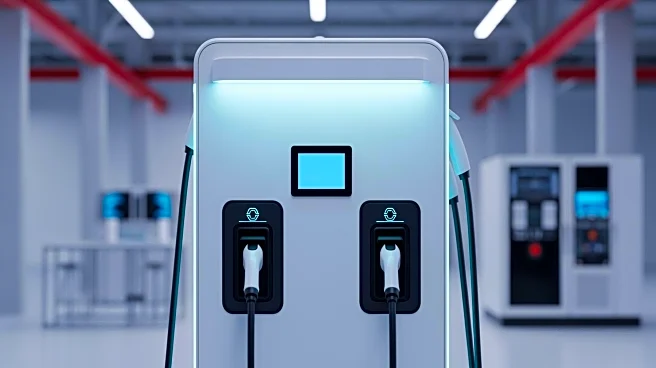What's Happening?
General Motors (GM) has reported a significant drop in its third-quarter net income, down 57% compared to the same period in 2024, primarily due to changes in electric vehicle production. The company has adjusted its full-year earnings guidance to $7.7
billion to $8.3 billion, down from the previous range of $7.7 billion to $9.5 billion. Despite these challenges, GM's core automotive business remains strong, with premarket stock value surging 10% following the earnings release. CEO Mary Barra highlighted tariff relief from President Trump as a positive factor, and GM's market share reached its highest third-quarter level since 2017. The company is also planning to end production of its BrightDrop electric vans in Canada.
Why It's Important?
The adjustments in GM's earnings guidance reflect the broader challenges faced by automakers in transitioning to electric vehicles. The reduction in federal tax credits for EVs and increased tariffs on imported parts are impacting profitability. GM's strategic focus on its core automotive business and domestic production could mitigate some of these pressures. The company's ability to navigate these challenges will be crucial for its long-term competitiveness in the automotive industry, particularly as it seeks to expand its EV offerings and maintain market share.
What's Next?
GM plans to continue its 'self-help' mitigation efforts to reduce the impact of tariffs and production costs. The company is expected to focus on increasing domestic sourcing and manufacturing to offset import tariffs. Additionally, GM's decision to end production of certain EV models indicates a strategic shift to optimize its product lineup. Investors and industry stakeholders will be closely monitoring GM's ability to adapt to these changes and its future earnings performance.
Beyond the Headlines
The shift in GM's production strategy highlights the complexities of transitioning to electric vehicles, including the need for infrastructure and consumer adoption. The company's focus on domestic production aligns with broader economic and political trends favoring U.S. manufacturing. This could have long-term implications for employment and economic growth in regions with significant automotive industry presence.















